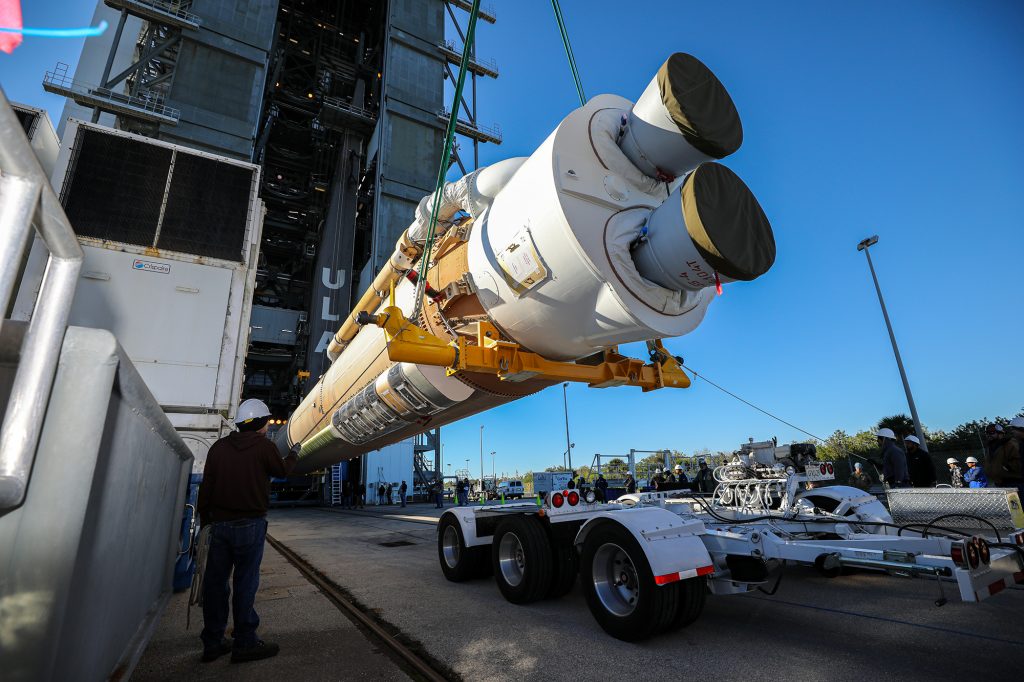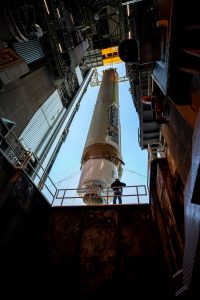Atlas V Rocket to Launch New Sun Mission Takes Shape at Cape Canaveral


The rocket that will launch a new spacecraft to study the Sun is beginning to take shape at Space Launch Complex 41 at Cape Canaveral Air Force Station in Florida. The first-stage booster for the United Launch Alliance Atlas V rocket is “on stand,” meaning it has been raised to a vertical position inside the complex’s Vertical Integration Facility. In the coming days, the one solid rocket booster needed for the mission will be added to the booster, followed by the single-engine Centaur upper stage.
Solar Orbiter is an international cooperative mission between ESA (European Space Agency) and NASA. The mission aims to study the Sun, its outer atmosphere and solar wind. The spacecraft will provide the first images of the Sun’s poles. NASA’s Launch Services Program based at Kennedy Space Center in Florida is managing the launch. Liftoff is scheduled for Feb. 5, 2020.

























